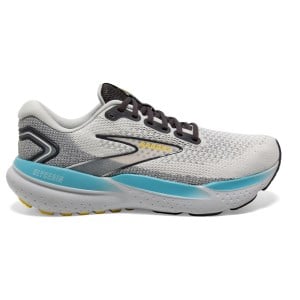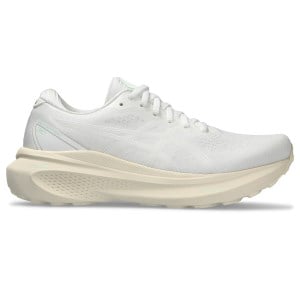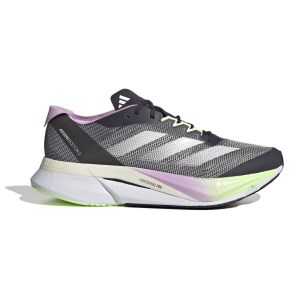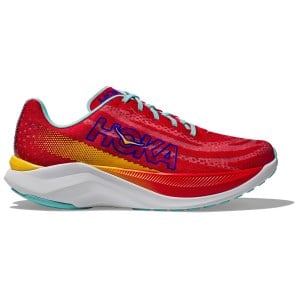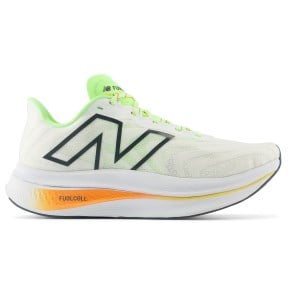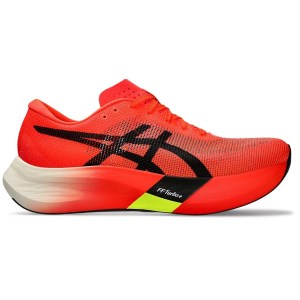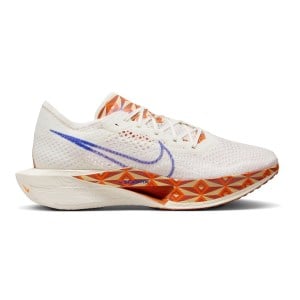How To Choose The Right Running Shoes: Easy Runs To Race Day
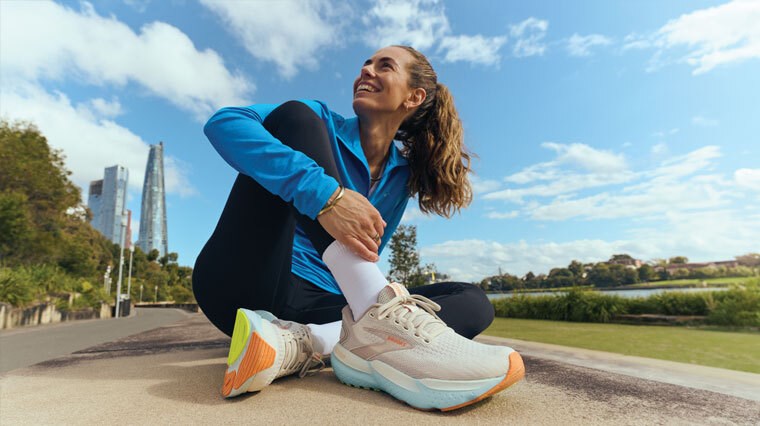
Running footwear has evolved over recent years and there’s never been more options on the market for new and experienced runners to enjoy!
We’ve seen a huge change in how footwear has been designed and executed and the result is running shoes that are now more specific to different types of runs. Whether that be easy/recovery day, tempo/interval sessions, long runs or race day, running shoe brands are creating models to accommodate the different demands of each type of run.
A way to consider how brands are engineering their footwear models would be to use car tyres as an example - using off-road tyres for 4WD tracks, racing tyres for high-speed performance on the tarmac or everyday tyres to get you from A to B. Each occasion demands different characteristics or features and running shoes can be thought about in a similar way.
Let’s break down the different types of running sessions and discuss what your running shoe should be providing you.
Easy Runs
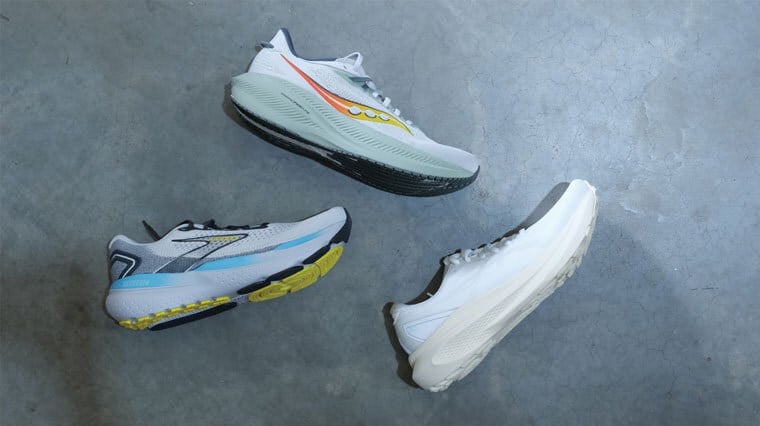
This is the type of run that should fill up the majority of your training week (80% of weekly volume as a guide) and therefore you want this running shoe to offer comfort, stability and durability as you’ll be in them a lot! The typical lifespan of a running shoe in this category can vary depending on the midsole foam, body weight of the runner and how often the shoe is used during the training week. I’d suggest the general range to use as a guideline would be 500-900km.
These are runs where you aren’t chasing speed, but building aerobic base through low intensity jogging so the running shoe will be engineered to accommodate those demands. This means the running shoe should match your preference in cushioning level, offer enough support for how you move and be durable enough for your training load.
These mileage shoes will feature uppers that are typically more built up and supportive in how they hold your foot on top of the platform and they tend to provide more stability than shoes you’d wear for tempo, interval efforts and race day. We’ve seen easy day mileage shoes trend towards more cushioning that feature a broad midsole surface area underfoot to provide a stable ride.
3 popular running shoes for easy runs:
Tempo/Interval Training
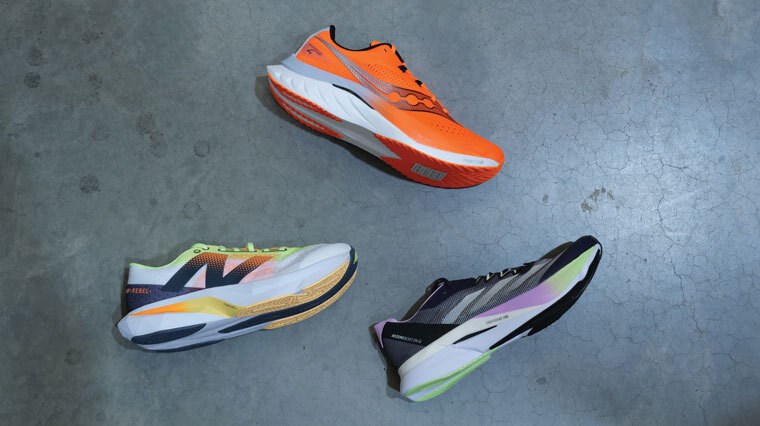
The priority of these running sessions is to work on your speed to compliment the aerobic base building of the easy days. Therefore, the running shoe should match the goal of the session and assist you to run those faster paces more efficiently and at a lower perceived effort.
The characteristics of these running shoes will normally be lighter weight than your mileage shoe which is achieved by midsole foam that is more responsive and propulsive. The upper will generally be more minimal, with less overall structure, padding and bulk.
Some of these running shoes can also feature a stiffening agent such as a plate or rods that are generally made of nylon material which has more flexibility than their carbon plated race day shoe. These will compliment the midsole foam by stabilising the softer foam and increase the energy return through foot strike and toe-off.
Generally speaking, the trade-off for these types of running shoes is stability and durability. However, as you are typically using these shoes once or maybe twice during your training week for your faster efforts you can still get a decent lifespan out of the shoe, just don't expect them to have the durability of your easy day mileage shoe. We have also seen subtle elements incorporated into these shoes over recent years to make them more stable than the earlier iterations of these models.
3 popular running shoes for tempo/interval training:
Long Runs
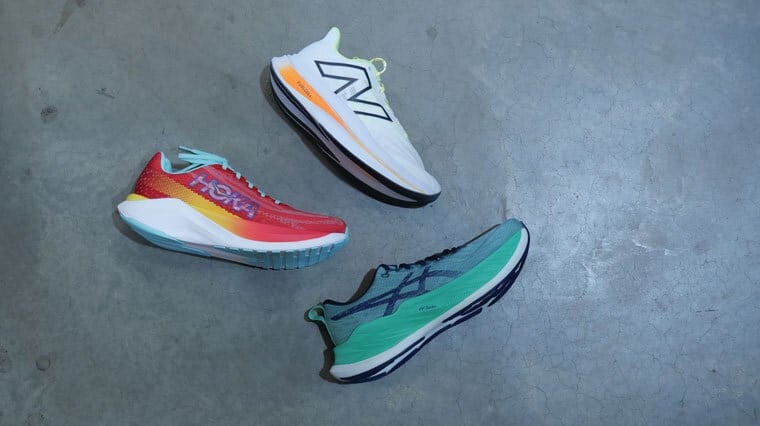
There's a wide range of options for the running shoe you could use for your weekly long run. The majority of runners will opt to use their easy day mileage shoe if their long run is done at their easy pace.
However, a newer category of running shoes known as ‘super trainers’ are becoming increasingly popular as a shoe used primarily for long runs. The main reason for this is the versatility they can provide to the runner.
They function really well at easy paces, but if you’re also incorporating pace changes or higher intensity efforts within your long run, this category of running shoe could be worth a look! The ‘super trainers’ are a blend of race day technology, but are engineered with increased durability and stability for everyday mileage.
These shoes give the runner the ability to change pace easier over the course of a long run and can also have the benefit of keeping the legs feeling fresher for the next week of training due to the midsole foam and geometry.
Read my blog on 'super trainers' to see if you could fit them into your shoe rotation.
3 popular shoes for long runs:
Race Day
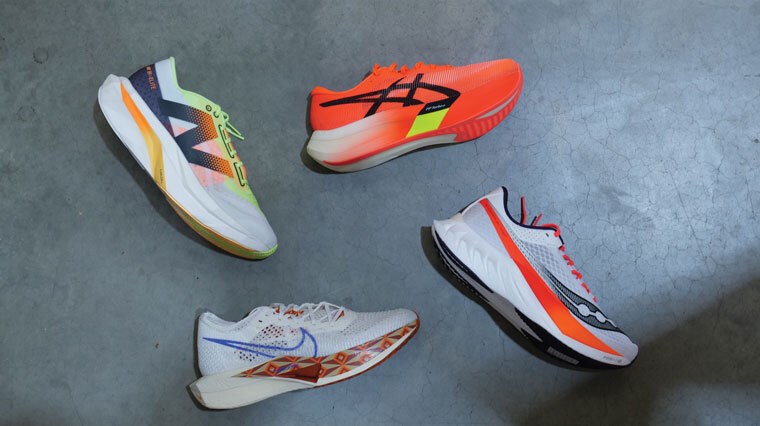
When you’re chasing a personal best on race day you want your shoe to feel fast and make running at your goal pace feel easier. The premise of racing shoes are speed and running efficiency over durability and stability. However, subtle differences in the engineering of brand models means there’s a shoe for most runners at all levels of running experience and speed.
Race day shoes also known as ‘super shoes’ can be characterised by midsoles which are the brands’ most responsive and bouncy foam that is often paired with a plate to act as a stiffening agent. The upper material will be super minimal to create the lightest and most breathable package on top of the foot.
Some runners will opt to use this type of shoe for their tempo/interval sessions during the week too instead of just using them on race day. This will come down to the runner's preference as these shoes are the fastest, however they are the most expensive and least durable shoe category we have discussed.
All running shoe brands such as Asics, New Balance, Hoka and Nike offer a really competitive option in this space and they’re something you should consider if you’ve got an event on your running calendar. These are incredibly fun shoes to run in and we’ve seen a large proportion of runners from the elite level to beginner recreational runners utilise these shoes to chase their individual running goals.
4 popular running shoes for race day:
- Asics MetaSpeed Paris
- New Balance FuelCell SuperComp Elite v4
- Saucony Endorphin Pro 4
- Nike ZoomX Vaporfly Next% 3
Looking For Advice?
There’s never been a better time to be a runner with so many options on the market. If you’re looking for advice, it's best to pop in-store at Sportitude Running at Hindmarsh or Sportitude at Fullarton to chat to one of our running shoe experts about your shoe rotation.
Alternatively if you’d like to find the best running shoe for you, we offer a RunDNA gait analysis service which can be booked here through our website.
If you can’t make it in store, book a Live Fit to chat to our staff virtually.
About The Author
Nathan Pope
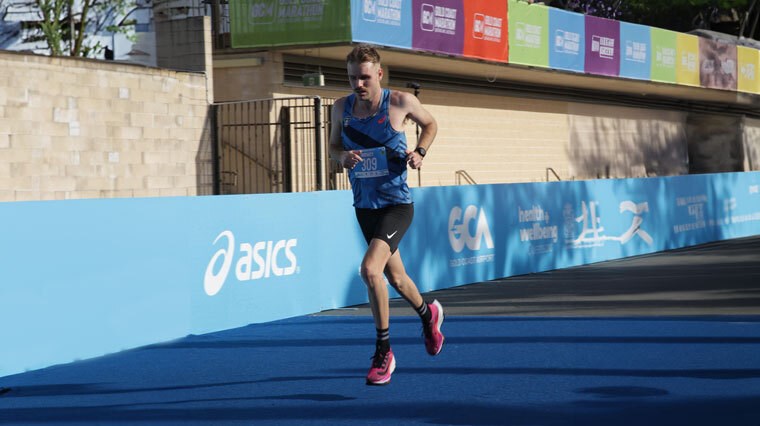
My running journey began when I was 8 years old at Little Athletics in the Barossa. I regularly participated in track and field events until the age of 12. From there, I had a hiatus from running and only returned in 2016 to run the City to Bay. This kick-started my love of running again and it’s now a huge part of my life.
I’ve enjoyed running from a social aspect but also the performance side and regularly run local South Australian events and interstate events such as the Gold Coast marathon festival. I have really enjoyed competing in half marathons, but after completing my first marathon in 2023 I have shifted my training towards the longer distance events.
My passion for running has led to a natural interest in running footwear. My experience working in run speciality retail paired with my Bachelor of Podiatry has allowed me to understand in depth how footwear functions. From there I’ve been able to educate runners on how their footwear choices can help manage injuries or improve their performance.

